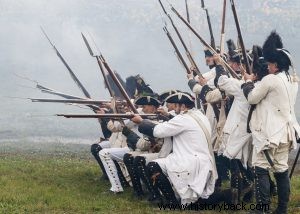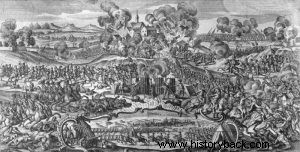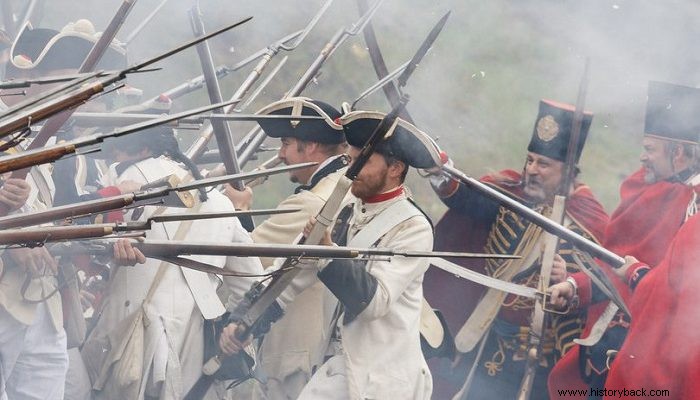
Frederick the Great's Prussian army was considered the world's most perfect military machine at the time and not without reason as it had achieved amazing victories although almost always outnumbered. However, this myth that you largely cultivate to this day, fell dramatically in the battle of Domstad, today's Domasov in the Czech Republic.
The plan that didn't work
In May 1758 Frederick invaded the then Austrian-controlled Moravia and besieged the important city of Olomouc. Frederick hoped that this would entice the Austrians to give battle to lift the siege of the city believing that it would crush them.
If the Austrians did not come to the city's aid, he would overrun it, securing an excellent base of operations in enemy territory, pressuring even Vienna from there. The Austrian commander in Moravia Marshal von Daun knowing the quality and strength of the Prussian army he did not dare to intervene.
The city's garrison, however, fought heroically and held off the Prussians for almost a month. In June, however, the city was ready to fall. The walls had collapsed in two places while supplies and ammunition began to run out. But the same was happening to the Prussians who also began to face shortages.
The big supply convoy
To supply his army, Frederick ordered the formation of a huge convoy of 4,000 carriages and 2,500 cattle which would be protected by a strong force so as not to be endangered by the Austrian light troops who dominated the area.
The supply convoy was concentrated in Silesia and reached Moravia at the end of June. The presence of the huge supply convoy could not remain hidden as it formed a phalanx 45 km long in a straight line. Covering the convoy was a force of about 11,000 (1,340 cavalry) men under Colonel von Mosel. Another 20,000 Prussians under General von Chitten rushed to reinforce the supply convoy.
The Austrians, however, were unwilling to allow the Prussian convoy to reach Olmutz. von Daun assigned the task of destroying it to Major Generals Ernst Gideon von Ludden and to the Croatian origin Josef von Siskowicz .
Surprise and fire
Loudon moved first with 6,000 men (4 battalions of infantry, 1 regiment of dragoons, 1 regiment of hussars, 1 light artillery and light infantry) and deployed his men in the village of Gundramovice awaiting Siskovic.
The supply convoy arrived in the area on June 28 early in the morning. Immediately the Austrians opened fire. A Prussian battalion attempted to intervene but was dispersed by heavy enemy fire. The Prussians deployed their artillery and returned fire while also attempting new attacks against the Austrians.
But all their attacks were repulsed with heavy losses. The battle had already lasted five hours and the Austrians were holding. Little by little, however, the Prussian numerical superiority began to pay off.
Pressed Loudon retreated slightly to the nearby Moravian village of Berun without being disturbed by the Prussians. Despite their great losses the Prussians continued their movement but having lost a lot of time. The supply convoy moved again while in the meantime Chieten arrived with his men. But Loudon was also reinforced as Siskowicz arrived with also 6,000 men.
Disaster
On June 30 the Austrians had deployed in the area of Domstad. The area with its low hills and forests was ideal for the ambush that the two Austrian generals prepared. Siskovich and his men deployed on the left side of the only road through which the Prussians would necessarily pass. Loudon and his men would intervene in a second time from the other side of the road.
The unsuspecting Prussians approached the Austrian ambush. Their vanguard with 4,850 soldiers and 250 chariots was allowed to pass. But immediately the main body of the Prussian convoy appeared and opened heavy fire. The Prussians were taken by surprise and confusion soon arose in their ranks.
In the meantime Loudon and the Prussians attacked, although they were outnumbered almost 3:1 they failed to cope with the pressure. After 7 hours the Prussian army collapsed. The losses of the Prussians were heavy and exceeded 3,500 men against only 600 of the Austrians.
Thousands of carriages loaded with supplies and ammunition fell into the hands of the victors, as well as 2 million Prussian thalers, i.e. the entire treasure, 2,200 horses and thousands of cattle. Only the 250 carriages of the Prussian vanguard that were allowed to pass escaped destruction.
But 150 of them were taken over, a little later by the Austrian light infantry. As a result of the great Austrian victory, Frederick lifted the siege of Olmutz and left Moravia. Prussia suffered a strategic defeat because of a tactical defeat...
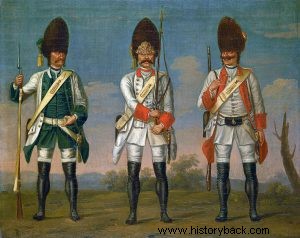
Elite grenadiers of Austrian army regiments.
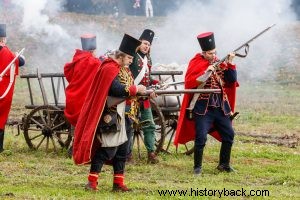
Light infantry of the Austrian army, the so-called "Croats".
